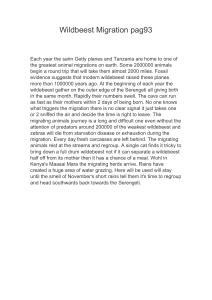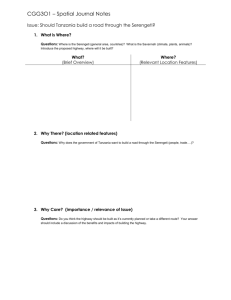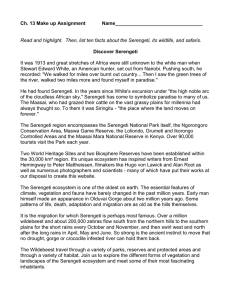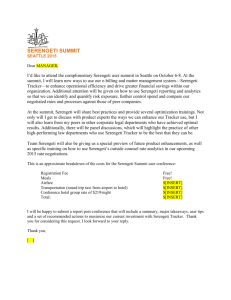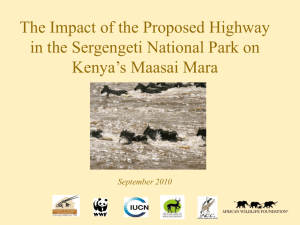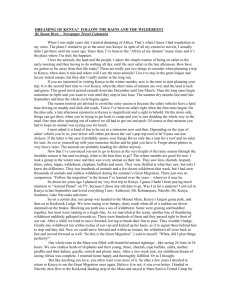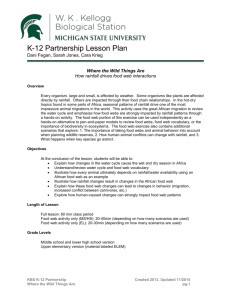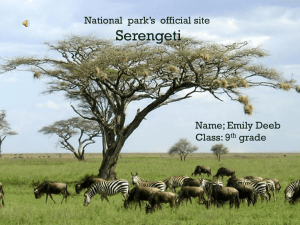The Serengeti Migration
advertisement
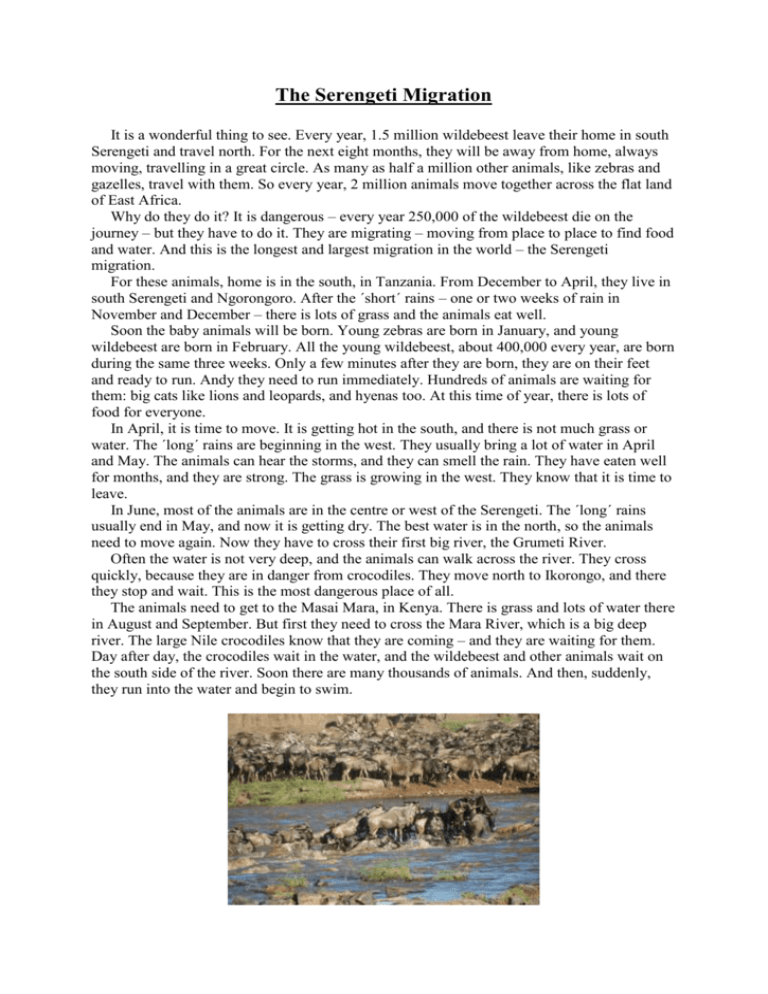
The Serengeti Migration It is a wonderful thing to see. Every year, 1.5 million wildebeest leave their home in south Serengeti and travel north. For the next eight months, they will be away from home, always moving, travelling in a great circle. As many as half a million other animals, like zebras and gazelles, travel with them. So every year, 2 million animals move together across the flat land of East Africa. Why do they do it? It is dangerous – every year 250,000 of the wildebeest die on the journey – but they have to do it. They are migrating – moving from place to place to find food and water. And this is the longest and largest migration in the world – the Serengeti migration. For these animals, home is in the south, in Tanzania. From December to April, they live in south Serengeti and Ngorongoro. After the ´short´ rains – one or two weeks of rain in November and December – there is lots of grass and the animals eat well. Soon the baby animals will be born. Young zebras are born in January, and young wildebeest are born in February. All the young wildebeest, about 400,000 every year, are born during the same three weeks. Only a few minutes after they are born, they are on their feet and ready to run. Andy they need to run immediately. Hundreds of animals are waiting for them: big cats like lions and leopards, and hyenas too. At this time of year, there is lots of food for everyone. In April, it is time to move. It is getting hot in the south, and there is not much grass or water. The ´long´ rains are beginning in the west. They usually bring a lot of water in April and May. The animals can hear the storms, and they can smell the rain. They have eaten well for months, and they are strong. The grass is growing in the west. They know that it is time to leave. In June, most of the animals are in the centre or west of the Serengeti. The ´long´ rains usually end in May, and now it is getting dry. The best water is in the north, so the animals need to move again. Now they have to cross their first big river, the Grumeti River. Often the water is not very deep, and the animals can walk across the river. They cross quickly, because they are in danger from crocodiles. They move north to Ikorongo, and there they stop and wait. This is the most dangerous place of all. The animals need to get to the Masai Mara, in Kenya. There is grass and lots of water there in August and September. But first they need to cross the Mara River, which is a big deep river. The large Nile crocodiles know that they are coming – and they are waiting for them. Day after day, the crocodiles wait in the water, and the wildebeest and other animals wait on the south side of the river. Soon there are many thousands of animals. And then, suddenly, they run into the water and begin to swim. Animals crash into each other and many are hurt. The crocodiles find food easily. They can live for a long time without food, but in these hot days of summer, they have the best meals of the year. Some animals die in the river, but most of them get across. During the last weeks of summer, there is grass and water here in the north. They stay until October or November, when the storm clouds arrive in the south. The ´short´ rains are ready to begin. The animals turn south, and they travel quickly. They want to be home in south Serengeti again, because new grass is growing there. They will stay there until April, when the great Serengeti migration begins again. (Newbolt, B.: World Wonders. OUP. Oxford 2011.) (Figure from: http://en.wikipedia.org/wiki/File:Wildebeest_crossing_river_-_Stefan_Swanepoel_.jpg; Stefan Swanepoel, 2008) Task 1: What do the following number from the text mean? 1.5 million – 8 – 0.5 million – 250,000 – 400,000 Task 2: The animals have to cross two rivers (according to the text). Give the names of the rivers and short descriptions from the text. Task 3: Look at the map and with the help of the text describe the route of the animal migration. You can make short outline in writing to support your description. http://baobabexpeditions.wordpress.com/2010/06/28/annual-migration-of-the-wildebeest-from-the-serengeti-into-the-masai-mara/; Richard Pfaffli ,June 28, 2010
